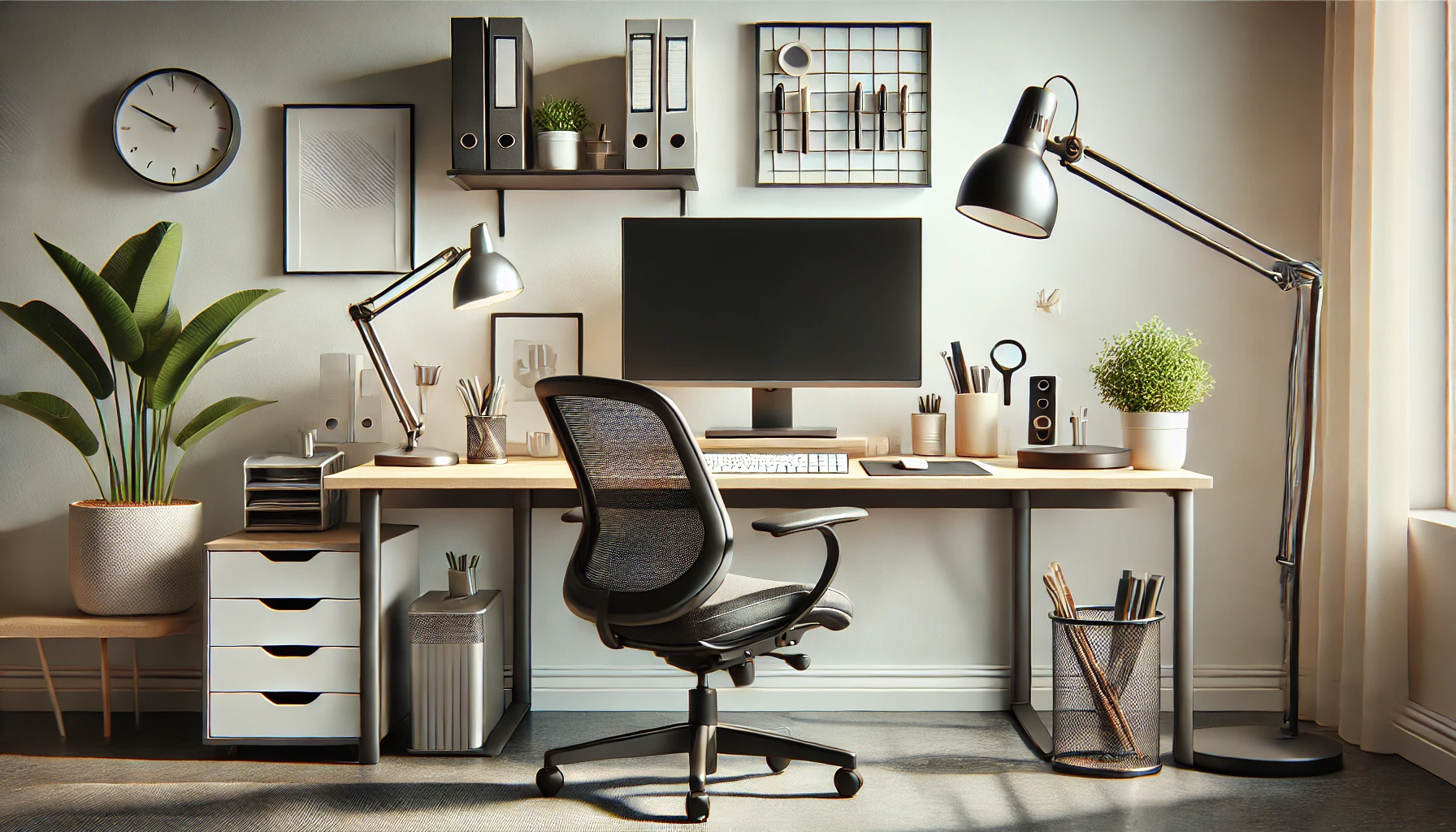Do you ever find yourself feeling stiff, sore, or even distracted after a long day at your home office? You’re not alone! Sitting for hours at a desk can lead to a variety of aches and pains that make working from home more uncomfortable than it needs to be. The solution? Top ergonomic home office accessories designed to improve your posture, reduce strain, and keep you comfortable throughout your workday. In this post, we’ll guide you through the top ergonomic accessories that will not only enhance your workspace but also improve your overall well-being, keeping you productive and pain-free.
Table of Contents
Toggle1. Why Ergonomics Matter in a Home Office
When working from home, it’s easy to overlook the importance of proper ergonomics. Many people set up their home office with whatever furniture is available, but this can lead to poor posture and long-term health issues like back pain, neck strain, and even repetitive stress injuries. Investing in ergonomic accessories ensures that your workspace is tailored to your body’s needs, helping to:
- Improve posture: Proper alignment of your spine, neck, and shoulders.
- Reduce fatigue: Less strain on muscles and joints leads to more energy throughout the day.
- Prevent injury: Avoid discomfort and long-term health problems caused by poor seating or typing habits.
Ergonomic accessories are designed to provide support and adjust to your body’s natural position, making your workday smoother and more comfortable.
2. Must-Have Ergonomic Accessories
When building an ergonomic home office, a few essential items will drastically improve your comfort and productivity. Let’s explore these must-have accessories:
Ergonomic Office Chair
An ergonomic chair is the foundation of any comfortable home office. The best chairs are adjustable, allowing you to modify the height, armrests, and seat tilt to suit your posture. Look for features like:
- Lumbar support: To keep your lower back supported and aligned.
- Adjustable height: So your feet rest flat on the floor and your knees are at a 90-degree angle.
- Breathable fabric: For added comfort during long work sessions.
Investing in a high-quality chair prevents back pain and ensures that you’re sitting in the correct position all day long.
Height-Adjustable Desk
Standing desks have become incredibly popular because they allow you to alternate between sitting and standing throughout the day. Sitting for too long can lead to discomfort, but a height-adjustable desk provides flexibility. These desks can be adjusted to different heights, giving you the option to:
- Stand for better posture and circulation.
- Sit when you need a break or to focus on tasks.
Many modern adjustable desks have electric controls, making it easy to switch between positions without interrupting your workflow.
Footrests
A footrest might not be the first ergonomic tool you think of, but it’s essential for improving circulation and relieving pressure on your lower back. When sitting, it’s important that your feet are properly supported, especially if your chair isn’t low enough for your feet to reach the floor comfortably. A footrest helps:
- Promote better circulation.
- Reduce pressure on the lower back and legs.
- Improve posture by keeping your feet in the correct position.
This small accessory can make a big difference in your overall comfort.
3. Additional Ergonomic Tools to Enhance Comfort
Aside from chairs and desks, there are a few smaller accessories that can further enhance your ergonomic setup:
Wrist Rests
Repetitive typing can put strain on your wrists and lead to discomfort or even carpal tunnel syndrome. Wrist rests for your keyboard and mouse provide the necessary support to keep your wrists in a neutral position, reducing the risk of strain.
Monitor Stands
Positioning your monitor at eye level is key to reducing neck and eye strain. Monitor stands or adjustable arms allow you to raise your screen to the perfect height, ensuring that you’re not hunching over or looking down at your computer. This simple adjustment can make a huge difference in your posture.
Ergonomic Keyboards and Mice
Standard keyboards and mice can force your hands into awkward positions, leading to long-term discomfort. Ergonomic keyboards and mice are designed to fit the natural curve of your hands and wrists, reducing strain during long work sessions.
4. How to Set Up an Ergonomically Optimized Workspace
Creating an ergonomic workspace involves more than just buying the right accessories. Here are a few practical tips to ensure your setup is properly optimized:
- Chair height: Adjust your chair so your feet rest flat on the floor, and your thighs are parallel to the ground. Your elbows should be at a 90-degree angle when typing.
- Monitor position: Keep your monitor at eye level, about 20–30 inches away from your face. Your screen should be positioned so your neck stays straight without looking up or down.
- Desk height: Ensure that your desk allows for comfortable arm positioning, with your forearms parallel to the floor when typing.
- Take breaks: No ergonomic setup can prevent discomfort if you sit for too long. Take regular breaks to stand, stretch, and move around throughout the day.
By adjusting your workspace to suit your body’s needs, you can prevent strain and work comfortably for longer periods.
Conclusion:
Creating an ergonomic home office is one of the best investments you can make for your health and productivity. By incorporating these essential accessories—like an ergonomic chair, adjustable desk, and monitor stand—you’ll not only feel more comfortable but also work more efficiently. Whether you’re setting up a home office for the first time or upgrading your current space, these ergonomic tools can make a significant difference in your daily work routine. Prioritize comfort and health, and you’ll be more productive than ever before!

